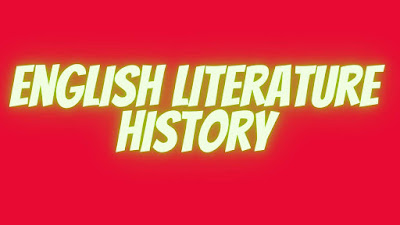In the history of English literature, there were different phases of progress. Each of the Phases, known as “Age” or “period”, has been given a particular name. Sometimes according to the name of the king or queen, sometimes after the name of a great writer, and sometimes according to the spirit of the time. Some of the ages have got more than one name because different historians have given them different names. Similarly, the duration of a particular age also differs according to the choice of the historians. Apart from these, some of the ages are subdivided into smaller ages. Though the names and time-span of the ages of English literature differ from historian to historian the following
List derived from M.H.-
a) Anglo-Norman period ( 1066-1340)
b) The Age of Chaucer (1340-1400)
c) The Renaissance Period (1500-1660)
d) The Neoclassical Period (1660-1785)
e) The Romantic Age (1798-1832)
f) The Victorian Period (1832-1901)
g) The Modern Period (1901-1939)
h) The Postmodern Period (1939---
The Anglo-Saxon Period started in the fifth century when the Jutes, Angles, and Saxons came to England from Germany, defeated the English tribes, and started their reign. It ended in 1066 with the Norman Conquest. The historical events which influenced the literature of this period. The great literary works of this period: “Beowulf”, the earliest epic of English literature, was written in this period. “The Wanderer”, “The Seafarer”, “The Husband’s Message”, “The Wife’s Lament” are among the remarkable poems of the age. The Middle English Period began with the Norman Conquest in 1066 & ended with the end of the fifteenth century. There are two shorter ages in this period. The span from 1066 to 1340 is called an Anglo-Norman period because the literature of that period was written mainly in Anglo-Norman, the French dialect spoken by the new ruling class of England. The period from 1340 to 1400 is called the Age of Chaucer, because Chaucer, the great poet, dominated this period. Another remarkable thought is that the “Middle Ages” are called the Dark Ages because what actually happened during that time can hardly be known.
The major writers of this period are- John Wycliffe, Geoffrey Chaucer, William Langlade, John Gower, and Sir Thomas Mallory. As well as the major literary works of this period are- Translation of The Bible into English, Troilus & Criseyde, Canterbury Tales, Piers Plowman Confessio amanitas, Mort d’ Arthur. With great effect, the Renaissance Period began in 1500 & continued till the Restoration in 1660. This period is called the Renaissance period because the renaissance spirit was the main force the characterized the literature of this time. This period of 160 Years is subdivided into four shorter ages according to the names of the political rulers:
The first age is called “The Elizabethan Age”. This great age is named after Queen Elizabeth 1 who reigned over England from 1558 to 1603. This is the most glorious age of English literature. The remarkable writers of this age are – Thomas More, Edmund Spenser, Nicholas Udall, Thomas Kyd, Sir Philip Sidney, Christopher Marlowe, William Shakespeare, Francis Bacon, Ben Johnson, John Lilly, and George Peel. (Continue)


it was very helpful thank you
ReplyDeleteReally helpful...
ReplyDelete